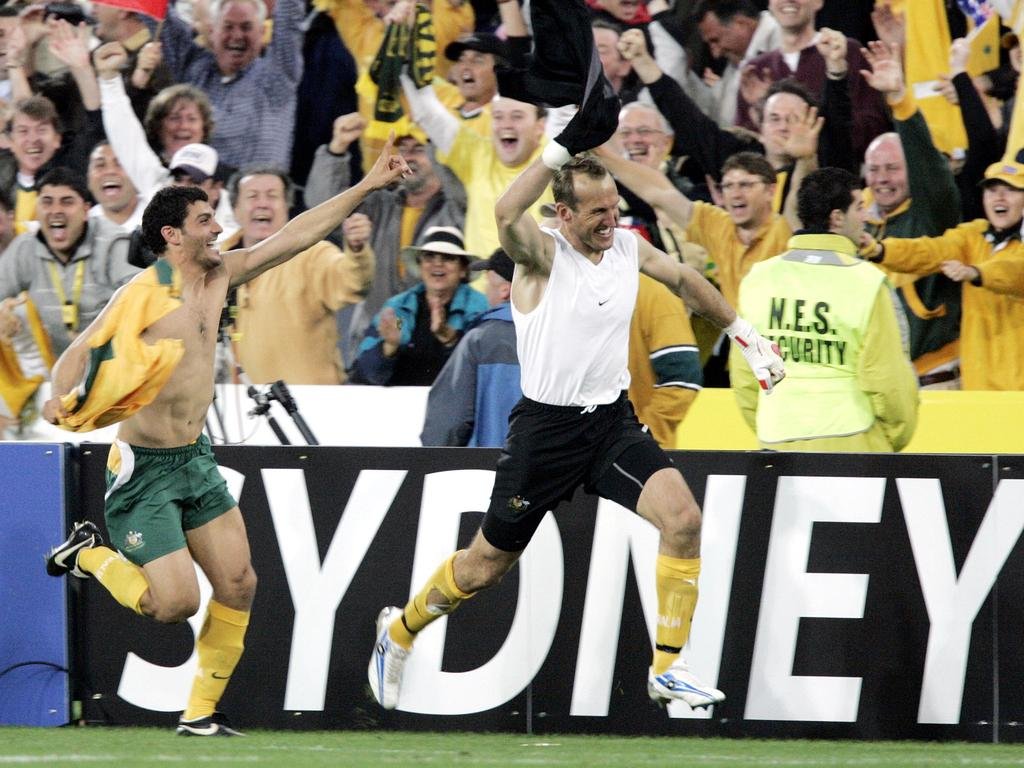A(lienated)-Leagues
We want every football fan in Australia to be in Sydney in the first week of June.
Danny Townsend, Australian Professional Leagues CEO
Mr. Townsend, what you've just said is one of the most insanely idiotic things I have ever heard. At no point in your rambling, incoherent response were you even close to anything that could be considered a rational thought. Everyone in this room is now dumber for having listened to it. I award you no points, and may God have mercy on your soul.
Ok that was harsh but I wanted to get the Billy Madison quote off.
For those of you who haven’t heard, the A-Leagues today announced a shock decision to lock in a Grand Final venue ahead of time for the first time in the competition’s history, with the NSW government bidding for, and winning, a three year rights deal to host the showpiece event in Australian domestic football.
Right, but why?
To paraphrase other efforts at rationalisation from Townsend, Sydney is viewed, both self-proclaimed and by the APL, as the home of Australian soccer, with several key moments in Australian soccer history occurring in the Harbour City, none more notable than that famous triumph over Uruguay in 2005, a spot kick from John Aloisi that sent millions into unfiltered raptures.
You know what? I get it, and I don’t necessarily disagree. Sydney has always been the venue for the big matches for the Socceroos. Olympic Park is the de facto, if unofficial, home of the Socceroos, the scene of the national team’s greatest successes on home soil.
But a few haphazard internationals a year doesn’t form the basis of judgement to award a city rights to a grand final for a, and lets be frank here, dwindling national competition with 75% of its competitors stationed elsewhere (yes I know Newcastle and the Central Coast are an hour north but that’s not the point).
Off the back of a historic World Cup campaign for the Socceroos over in Qatar, there was cautious optimism that football’s governing body in Australia could leverage the success of the tournament into a stronger and more viable long term product for a league in the A-League that has been suffering for years now.
Let’s start with attendance.
It’s no secret that when you tune into a men’s A-League game this season, one of the first things you inevitably notice is the sheer amount of unoccupied real estate in the stands. You might think this could be explained by a lingering hangover of the COVID-19 pandemic, but the truth is A-League crowds have been slowly crumbling for the better part of the last eight years.
Go back to the 2013-14 season, the average match attendance across the entire season was just north of 13,000 people a game, with only four clubs averaging under 10,000 in the Central Coast Mariners (small town team), Melbourne City (finding its footing in a city dominated by Melbourne Victory), Wellington Phoenix and Perth Glory. Even then, those clubs weren’t too far below the 10k threshold, with the Nix at 8.2k a game while the others were all above 9k.
Let’s fast forward to the last pre-COVID season, 2019-20, with a note that these figures are up until the outbreak of the pandemic, so not skewed by limited-crowd matches. The average attendance in 2019-20 was down to 9,400 a game. with only Melbourne Victory, Sydney FC and Western Sydney Wanderers pulling in five-figure crowds.
To be completely fair I’m not going to crucify the league for the crowds of 2020-2022 with the lingering pandemic fear in society, but with an open world now in 2022-23, the average crowd figure has rebounded to…8,900 a game.
What the APL have failed to realise in their haste to copy the model of a permanent Grand Final venue like the NRL (Accor Stadium, Sydney) and the AFL (Melbourne Cricket Ground) is due to the high-degree of public interest in those leagues and rusted-on fanbases in high-density areas, the Grand Final always attracts a full crowd, supplemented by neutrals and casual fans alike where fans of the teams participating can’t always pack out the stadium.
The A-League doesn’t have that goodwill or that concentrated fanbase to draw upon in a singular area.
Like it or not, the A-League Grand Final in the middle of NRL season in Sydney just does not have the appeal to a casual attendee. Part of the folksy charm of hosting the Grand Final at the venue of the highest finisher was the guarantee that you would get a strong home atmosphere and a crowd actively invested in a result.
By supplanting that to host a truly national competition’s title game in a city with no guarantee of a local representative, you run the risk of a truly monumental backfire. What happens if the Grand Final ends up being Perth Glory vs. Wellington Phoenix (yes I know both those teams are near the bottom of the ladder but that’s besides the point)? Yes I’m sure the people of Sydney will turn out in droves for that one.
A larger point though is that the APL has once again introduced a new barrier to football for no real apparent reason, besides some sort of obvious financial incentive for the league, but even then I can’t imagine it’s too hefty.
Cycle back to the start of last season when Fox Sports (who aren’t blameless in all of this) lost the rights of the league to a new upstart streaming service in Paramount Plus. For just $12 a month you can add yet another streaming provider to your ever-growing catalogue of confusing bank charges, all for the benefit of being able to watch the A-Leagues and…not much else if we’re being honest.
And that’s the sad reality. Foxtel itself is a somewhat dying service among the target demographic of a sporting league trying to grow (ie, the younger audience of 18-39 year olds), but Kayo, Foxtel’s satellite sports-only service, is immensely popular for those who want access to Foxtel’s sports catalogue without the extra guff.
At the end of FY2022, Foxtel reported 4.41 million paid subscribers, with the media giant crediting growth in Kayo and Binge for the surge in subscribers to the platform. A platform which, until last season, held the rights to the A-Leagues. I can’t find exact numbers on the amount of subscribers Paramount Plus has in Australia, but I’m assuming it’s still a solid amount.
The difference is people that subscribe to Kayo for other reasons to the A-League are more likely to flick on the service and casually tune into a game of football than those who have subscribed to Paramount Plus for other reasons to the A-League, and it is the growth of that casual fanbase that the APL has sorely misread.
The other barrier is obviously travel.
We’ll work with our sponsors to look at ways to package up travel to make sure it’s affordable. The grand final is something we believe is the time that all football fans should celebrate and know where it’s going to be ahead of time and plan their lives around it.
Danny Townsend, APL CEO
That’s all well and good, making travel affordable through package deals, but making travel affordable through package deals is only necessary because of the decision to remove the venue of the Grand Final from a guaranteed participant’s home into a potentially neutral venue.
Speaking of a neutral venue, part of the allure of climbing the ladder and finishing as high as possible was the prospect of ensuring the Grand Final was played at your home ground.
With that benefit gone, what incentive does it give interstate clubs to win in certain situations?
I realise that’s a slippery slope, but imagine a team is second, and can win on the last week to secure the Minor Premiership but risk injuries in the final game, or guarantee a full bill of health for the squad in the finals even if it means resting players and accepting second place? An unlikely scenario? Sure, but not out of the realms of possibility now the Minor Premiership is little more than a meaningless counting statistic.
Finally, it’s also not like there hasn’t been backlash from within around the league’s decision. First, Socceroos World Cup hero and Adelaide United captain, Craig Goodwin.
Not ideal.
But how about this statement from Melbourne Victory?
Melbourne Victory’s preference is, and always will be, to play any Grand Final (that we earn the right to host) in front of our fans at our spiritual home and what we believe to be the best football stadium in Australia, AAMI Park.
Post the League’s announcement today, we will work with our members, fans and partners to make sure they can support Melbourne Victory and continue to be a part of these big games.
Melbourne Victory, Official Club Statement
Frosty.
Now, the Melbourne statement could come across as sour grapes to the casual observer, and there’s certainly an element to that, but consider this.
The A-League is owned and run by the Australian Professional Leagues. Why does that matter? Well, effectively, the league is an owned and operated conglomerate of the clubs that participate in it. Basically, the clubs are equal shareholders in the league, and as such would have had a say in the decision.
What makes that even more interesting is Townsend’s assertions that all the clubs were on board with the decision.
The clubs believe it is right, we’ve done a three-year deal and what we do beyond those three years will depend on how it’s received and how other states see value in what we’re doing.
Danny Townsend, APL CEO
Melbourne Victory’s statement reads otherwise.
The game of soccer in Australia has been given a tremendous buoy from the goodwill created by the Socceroos deep and historic run at the 2022 FIFA World Cup.
This just feels like a massive own goal.




